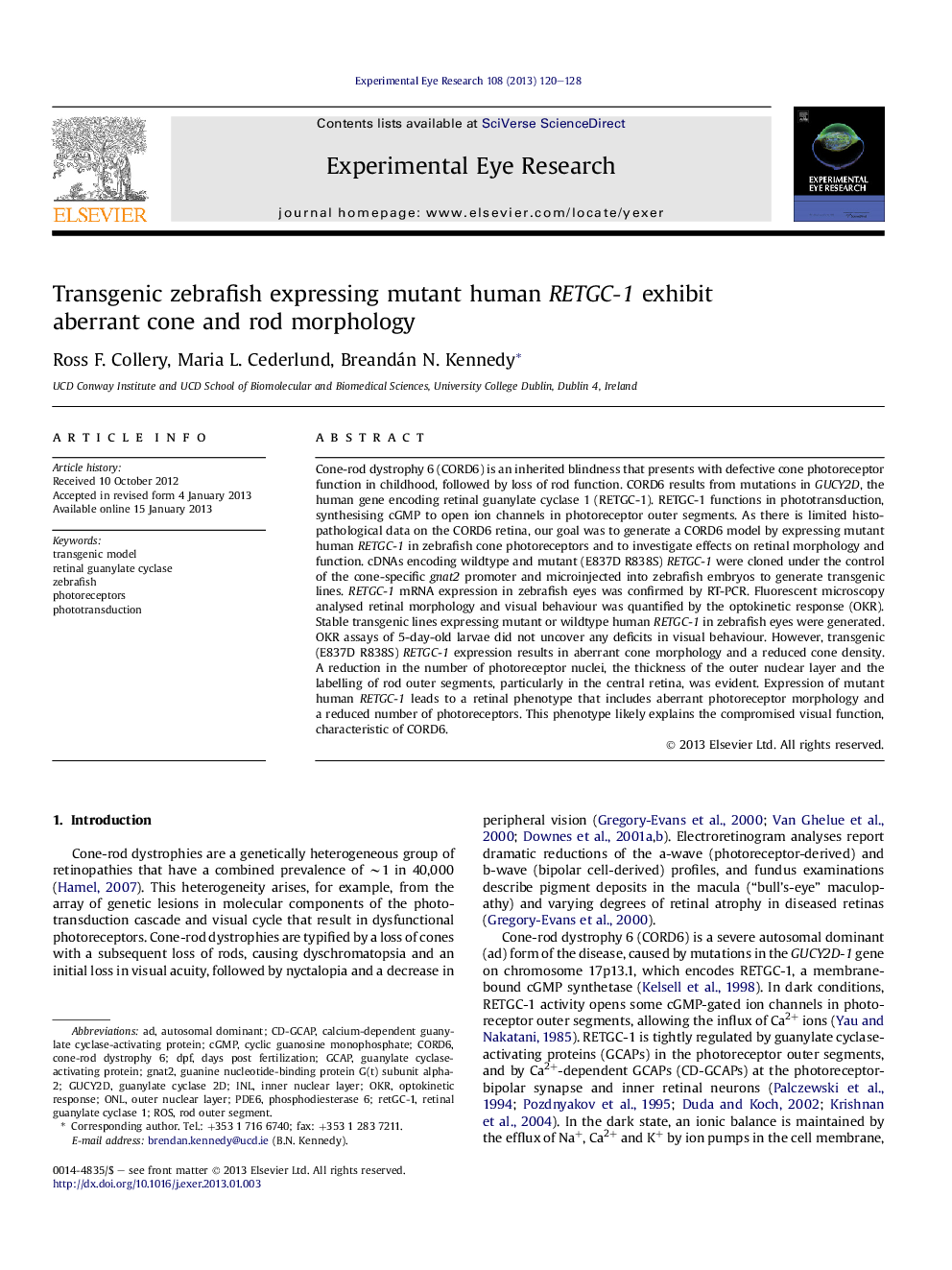| کد مقاله | کد نشریه | سال انتشار | مقاله انگلیسی | نسخه تمام متن |
|---|---|---|---|---|
| 4011323 | 1602614 | 2013 | 9 صفحه PDF | دانلود رایگان |

Cone-rod dystrophy 6 (CORD6) is an inherited blindness that presents with defective cone photoreceptor function in childhood, followed by loss of rod function. CORD6 results from mutations in GUCY2D, the human gene encoding retinal guanylate cyclase 1 (RETGC-1). RETGC-1 functions in phototransduction, synthesising cGMP to open ion channels in photoreceptor outer segments. As there is limited histopathological data on the CORD6 retina, our goal was to generate a CORD6 model by expressing mutant human RETGC-1 in zebrafish cone photoreceptors and to investigate effects on retinal morphology and function. cDNAs encoding wildtype and mutant (E837D R838S) RETGC-1 were cloned under the control of the cone-specific gnat2 promoter and microinjected into zebrafish embryos to generate transgenic lines. RETGC-1 mRNA expression in zebrafish eyes was confirmed by RT-PCR. Fluorescent microscopy analysed retinal morphology and visual behaviour was quantified by the optokinetic response (OKR). Stable transgenic lines expressing mutant or wildtype human RETGC-1 in zebrafish eyes were generated. OKR assays of 5-day-old larvae did not uncover any deficits in visual behaviour. However, transgenic (E837D R838S) RETGC-1 expression results in aberrant cone morphology and a reduced cone density. A reduction in the number of photoreceptor nuclei, the thickness of the outer nuclear layer and the labelling of rod outer segments, particularly in the central retina, was evident. Expression of mutant human RETGC-1 leads to a retinal phenotype that includes aberrant photoreceptor morphology and a reduced number of photoreceptors. This phenotype likely explains the compromised visual function, characteristic of CORD6.
► Transgenic zebrafish expressing mutant human RETGC-1 or wild type human RETGC-1 in cones were made.
► Expression of mutant human RETGC-1 in cones was associated with aberrant cone morphology.
► Loss of photoreceptor nuclei was seen with cone-specific expression of mutant human RETGC-1.
Journal: Experimental Eye Research - Volume 108, March 2013, Pages 120–128